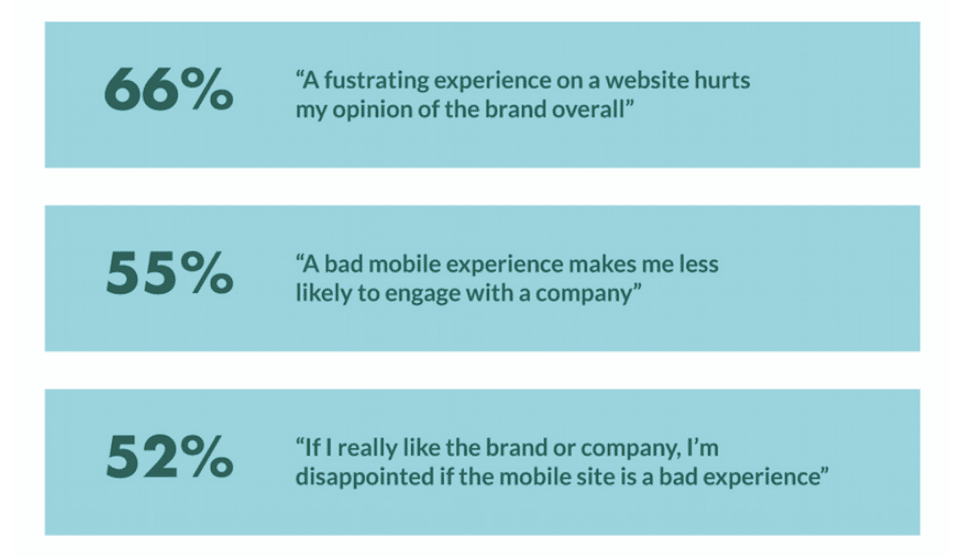So, your marketing and PR teams are planning and designing a new campaign strategy. It may be for a new product or service or one that is already available. They are going to consider a lot of important factors, from demographic targets to the best channels and platforms to focus on with campaign material.
However, to what extent have they actually factored their customers into the campaign? More accurately, have they included customer feedback and reviews anywhere in the campaign? Given how much faith consumers put in feedback and reviews, with some 76 percent looking at online reviews when searching for a local business, then it should definitely be important to your campaign teams.
What is customer feedback?
Image sourced from Super Office
Customer feedback covers a variety of information from customers regarding their experience and views of a product, service, or the brand itself. It can be a good indicator to potential customers of the quality of products a business offers or the level of customer experience it provides.
Customer feedback can be collected from a variety of sources and platforms. It may come from data you collect yourself via questionnaires and surveys, or it may be collected from social media reviews or reviews left on independent third party sites. Whatever the source, it offers crucial insights into what people think about your organization and products. Combined with customer journey map templates, you can gain deeper insights into customers’ perspectives.
Understanding this will help your customer journey management and help you to create a seamless customer experience. Understanding the latest consumer trends is essential to collecting customer feedback as it helps businesses to stay current and relevant. By keeping up with the latest trends, businesses can collect feedback that is more relevant and valuable to their target audience, which can help to improve the customer experience and increase brand loyalty.
It is crucial for marketing and PR teams to stay informed about the latest trends and incorporate them into their feedback collection strategies to ensure they are collecting the most useful and effective feedback possible.
Why customer feedback is important
Without feedback, a business is almost ‘flying blind’. It lets them know that customers are satisfied and that they are getting value from both the brand and the products or services it offers. When PR and marketing teams have no idea how much value customers get, then it makes it harder to nurture customers and create brand loyalty. This means that it is essential to not only rely on a business survey strategy but also to enact social listening tactics.
When you have brand loyalty, you will have higher customer retention rates and thus lower customer acquisition costs (CACs). Feedback helps you identify where you are doing things right and where customers experience pain points that you can then tweak to make improvements and make the customer experience better.
Why customer feedback is important in a campaign strategy
Building a relationship with customers is mainly built on trust. But trust is something that is not given easily and may take time to establish. Your campaign strategy may contain as many claims as you want, but that doesn’t mean automatic trust. However, when you include customer feedback within your campaign, then it becomes easier to establish that important trust.
Your teams need to consider carefully what to use and when to use it. A campaign that is full of feedback with no context will likely fall flat. They need to think about what feedback best suits particular areas of the campaign and how best to use it. The following list of factors recognize why customer feedback is important but also the whats and whens that are crucial too.
- Timeliness. You should not be using customer feedback anywhere and everywhere. Using it at the right point is ideal as it can validate points you are making. For example, if your campaign is promoting an online quiz maker, then including feedback from existing customers can tell potential customers how satisfied they are with it.
- Controversy. Not every bit of feedback will be positive but you can still use controversial feedback and turn it into a positive. If a customer has complained about a particular aspect of their experience, you can use it and show how you addressed it (and learned from it) and ensured that this issue will not arise again.
- Specific issues. There may be specific issues you want to address in your campaign. For example, you may have gained a reputation for slow shipping times and your PR team wants to address this. You may have changed your logistics provider and can now show that shipping times have improved dramatically and can use ‘then vs now’ feedback to illustrate this.
- Relevance. The feedback you use must be relevant to the area of the campaign it is used in. There is little point in including feedback on great customer service when you are discussing the benefits of a particular product. Look at the feedback you have collected and identify where it fits in your campaign material.
- Quantitative vs qualitative. Using a mix of feedback types is good advice. Using cumulative CSAT scores or star ratings can make for a good visual anchor. But using written feedback that extols a product or service can give the reader more information.
Using customer feedback in outreach campaigns is a great way to establish trust with potential customers. Your marketing and PR teams should consider including feedback that is relevant, timely, and specific to the issues addressed in the campaign material. However, it’s important to be aware of potential pitfalls, such as relying too heavily on reviews from a small group of people or using fake reviews.
Potential disadvantages in using customer feedback in campaign strategy
Image sourced from Review TUI
Marketing and PR teams need to realize that there can be some pitfalls in using—or overusing—reviews in any marketing campaign. Being aware of these can ensure that your campaign can be more successful.
- Representation. Sometimes, reviews can come from the same small group of people. These can be positive or negative reviews. If you find this is the case, rely more on surveys you have actually carried out with customers. You can even look at using video surveys to increase engagement.
- Trust. One of your most important goals is to establish trust. With more than 30 percent of online reviews likely to be fake, you want to be sure that any feedback you use is genuine. Being able to show that your feedback is 100 percent genuine can go a long way to establishing that trust. One way to verify the authenticity of online reviews is to try proxies, which can help identify and filter out fake reviews.
The takeaway
The importance of customer feedback cannot be underestimated. It can help you improve the customer experience, identify new products that your customers want, and to also improve other aspects of your service. These reasons and more is why customer feedback is important to your campaigns. Ensure there are high levels of communications between your marketing and PR teams using tools such as 8×8 direct routing.
You know that a good campaign strategy is important but is also not easy to get right every time. It can help to look at successful PR campaigns that have achieved their goals. Learning from others’ successes can help you identify your own weaknesses and to improve performance in the future.











